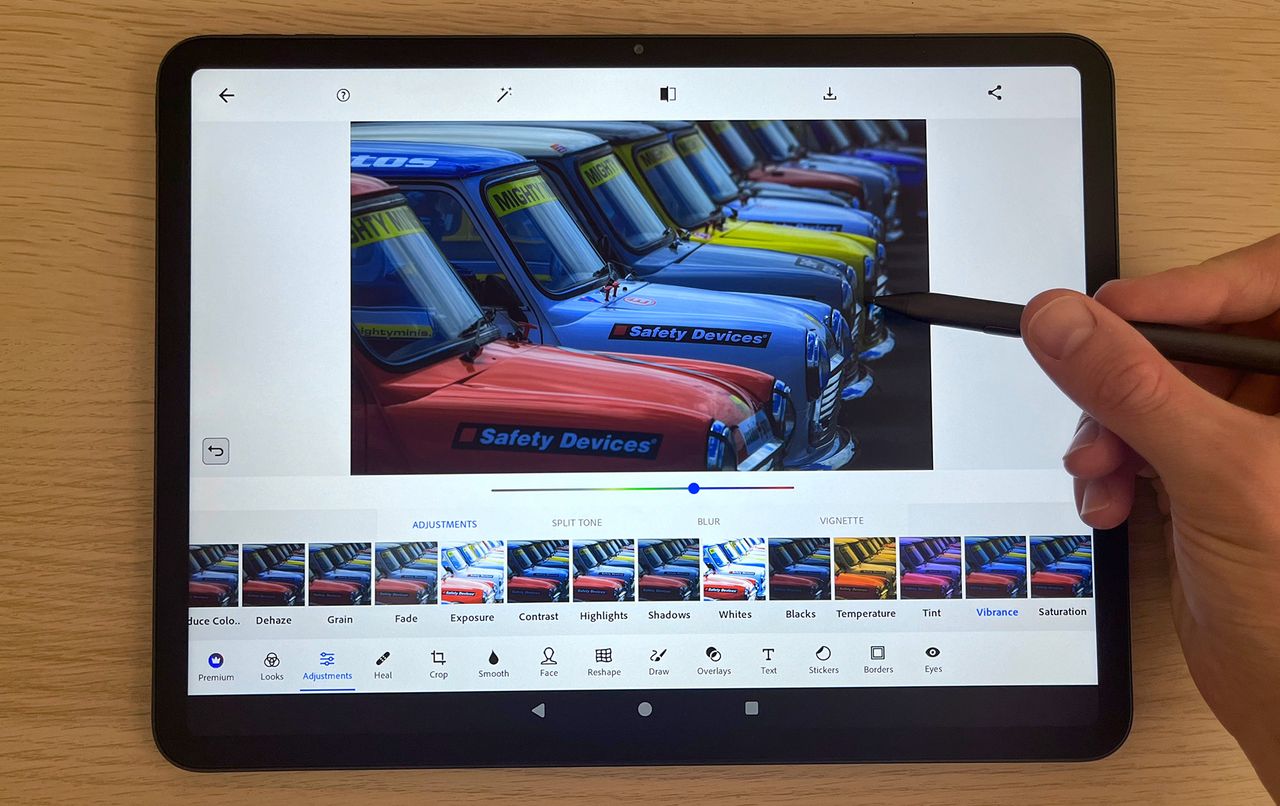
The Huion Kamvas Slate 11 and 13 are part of Huion’s standalone tablet range, which means they feature the core functionality of a traditional Pen Display, like the Xencelabs Pen Display 16, but run under their own steam, no laptop or computer required. Just like its standalone competitor, the XP-Pen Magic Drawing Pad, the Huion Kamvas Slate runs Android and grants access to the Google Play Store.
Ultimately, there’s not much difference between a standalone pen display and a consumer tablet and stylus. It largely comes down to a few quality-of-life upgrades and accessories, designed to enhance the drawing experience. Most notably, the Kamvas Slate has what Huion calls a Nano-Etched surface, a matte texture to provide a paper-like feel for extra comfort when drawing. The display is also fully laminated (also common among consumer tablets), which reduces the parallax from stylus tip to input, providing a more natural pen-to-paper drawing experience. The tablet is also bundled with Huion’s H-Pencil, a drawing glove (stops your bare palm from interfering with the touch screen), and spare stylus nibs.
The Kamvas Slate comes in two screen sizes, the Kamvas Slate 11 and 13. I got my hands on both and decided to review them together, due to their similar spec, the main difference being screen real estate. These tablets are not to be confused with the Kamvas Slate 10, which is the 11 and 13’s predecessor and Huion’s first standalone tablet. As somebody who uses an iPad Pro as a pen display, I was looking forward to testing the Kamvas Slate out and delivering my verdict. So, stylus in hand, let’s get to it.
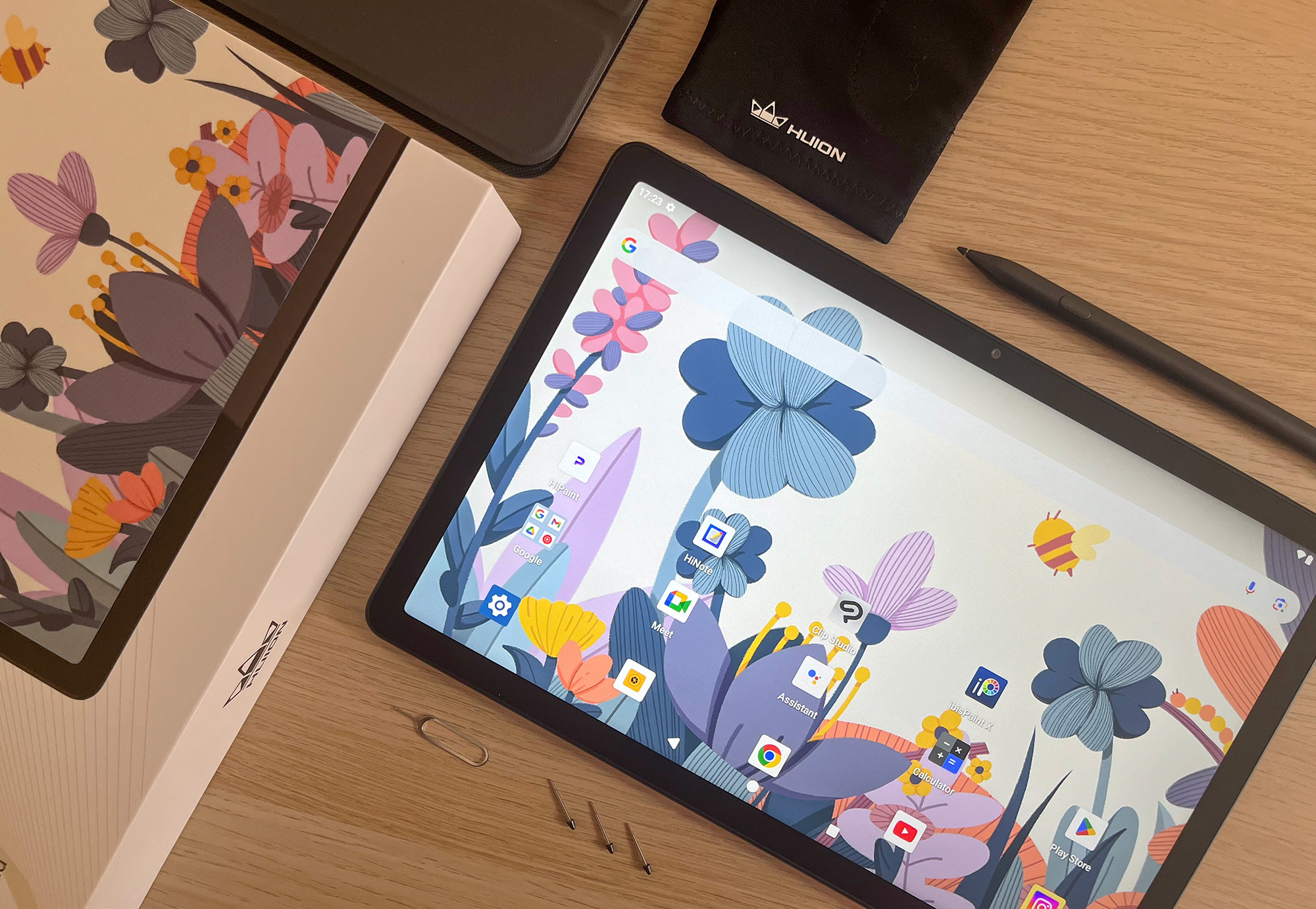
Huion Kamvas Slate 11 & 13: Specifications
Kamvas Slate 13 |
Kamvas Slate 11 |
|
Launch Price |
$449 / £499 / AU$699 |
$329 / £289 / AU$499 |
Display |
12.7-in nano-etched LCD (IPS) 4:3 aspect ratio |
11-in nano-etched LCD (IPS) 16:10 aspect ratio |
Display active area |
191 x 259.8mm |
147.4 x 235.9mm |
Display resolution |
2176 x 1600 (213PPI) |
1920 × 1200 (207PPI) |
Display color |
16.7 million (8bit), 99% sRGB |
16.7 million (8bit), 99% sRGB |
Display brightness |
>350nits |
>350nits |
Pen pressure levels |
4,096 |
4,096 |
Pen resolution |
N/A |
N/A |
CPU |
MTK Helio G99 (8-core) |
MTK Helio G99 (8-core) |
RAM |
8GB |
8GB |
Compatible OS |
Android 14 |
Android 14 |
Storage |
256GB (expanded to 1TB with microSD) |
128GB (expanded to 1TB with microSD) |
Camera |
8.0MP (front), 13.0MP (rear) |
8.0MP (front), 13.0MP (rear) |
Battery |
10000mAh |
8000mAh |
Connectivity |
Bluetooth 5.0 / Wireless 2.4GHz, 5GHz |
Bluetooth 5.0 / Wireless 2.4GHz, 5GHz |
Connections |
USB-C |
USB-C |
Size |
W 280.6 x L 211.8 x D 7.5mm |
W 256.8 x L 168.3 x D 7.5mm |
Weight |
1.5lbs / 682g |
1.1lbs / 500g |
Huion Kamvas Slate 11 & 13: Price
Both the Huion Kamvas Slate 11 and 13 are priced competitively at $329 / £289 / AU$499 and $449 / £499 / AU$699, respectively, and that’s before you factor in Huion’s frequent sales. Buy an iPad and you’re purchasing the tablet itself, but Shenzhen-based companies such as Huion and XP-Pen do like to bundle devices with plenty of goodies, adding to the perceived value. Both tablets come with a case, stylus, spare nibs, drawing glove, USB power cable, and card ejection tool. Everything you need to get started.
The Kamvas Slate’s biggest rival is arguably the XP-Pen Magic Drawing Pad, which retails for $499.99 / £449.99 / AU$799.99. It also uses an MTK Helio G99 (the MT8781) with 8GB of RAM, but has a smaller 12.2-inch display and doesn’t feel quite as premium as the Kamvas tablets out of the box. You’d need to look at the iPad Air for an Apple alternative with 13-inch screen real estate, but that sits in a much higher price bracket, starting at $799 / £799 / AU$1,349 and doesn’t include an Apple Pencil.
Huion Kamvas Slate 11 & 13: Design & Handling
Huion’s Kamvas Slate is an affordable rather than cheap tablet, but even so, I was pleasantly surprised by the build quality when taking both the 11 and 13 out of the box. Their backs are aluminum, and beyond what feels like a plastic strip on the right side of each tablet, their surrounds are cool to the touch, indicating they’re an alloy, too.
A roughly 8mm border of relief means the screens don’t go right to the edges. This might be a negative on a consumer tablet, but it’s a neat touch on a pen display because it gives a little more room for the palm of your hand to manoeuvre when drawing, before it falls off the device. Desktop pen displays often have much thicker borders, and while that wouldn’t be suitable on portable devices like these, it does slightly increase the size of the area of the screen that feels comfortable when drawing, and that’s a good thing.
The Kamvas Slate 13 has circular camera modules on its rear. They’re rather large and protrude quite prominently, making the included case a must if you want to keep them scratch-free. I say modules, but one of them houses the 13-MP rear camera and the other, the LED torch/flash. I’m not keen on the size, when they could have been smaller, and the plasticky serrated border, which surrounds them, detracts from the otherwise more premium feel and aesthetic of the rest of the tablet. The Kamvas Slate 11 has a much more tasteful-looking camera module set into a rectangular arrangement. Personally, I would have preferred this on the 13, especially as both cameras (technically) are the same.
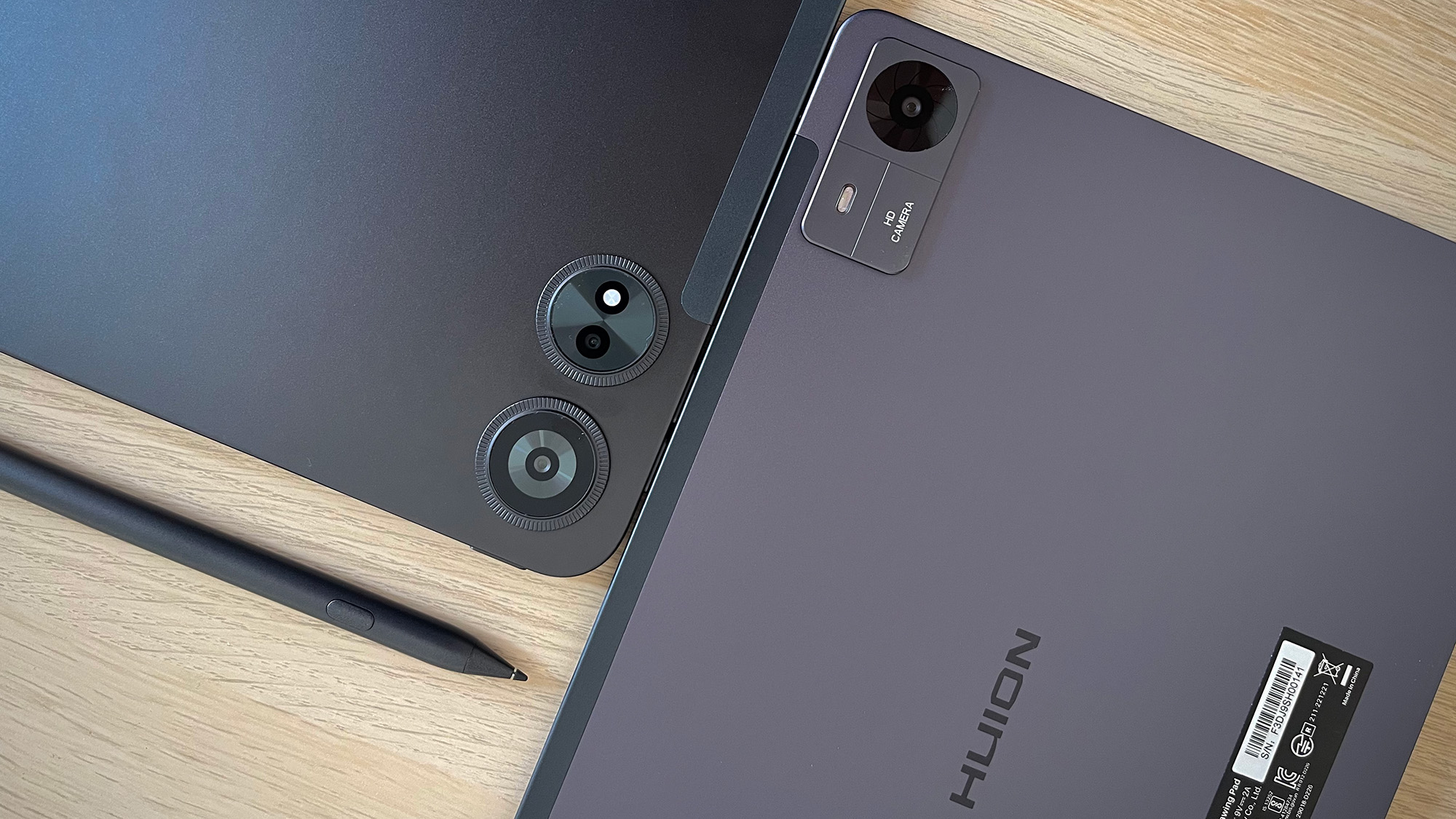
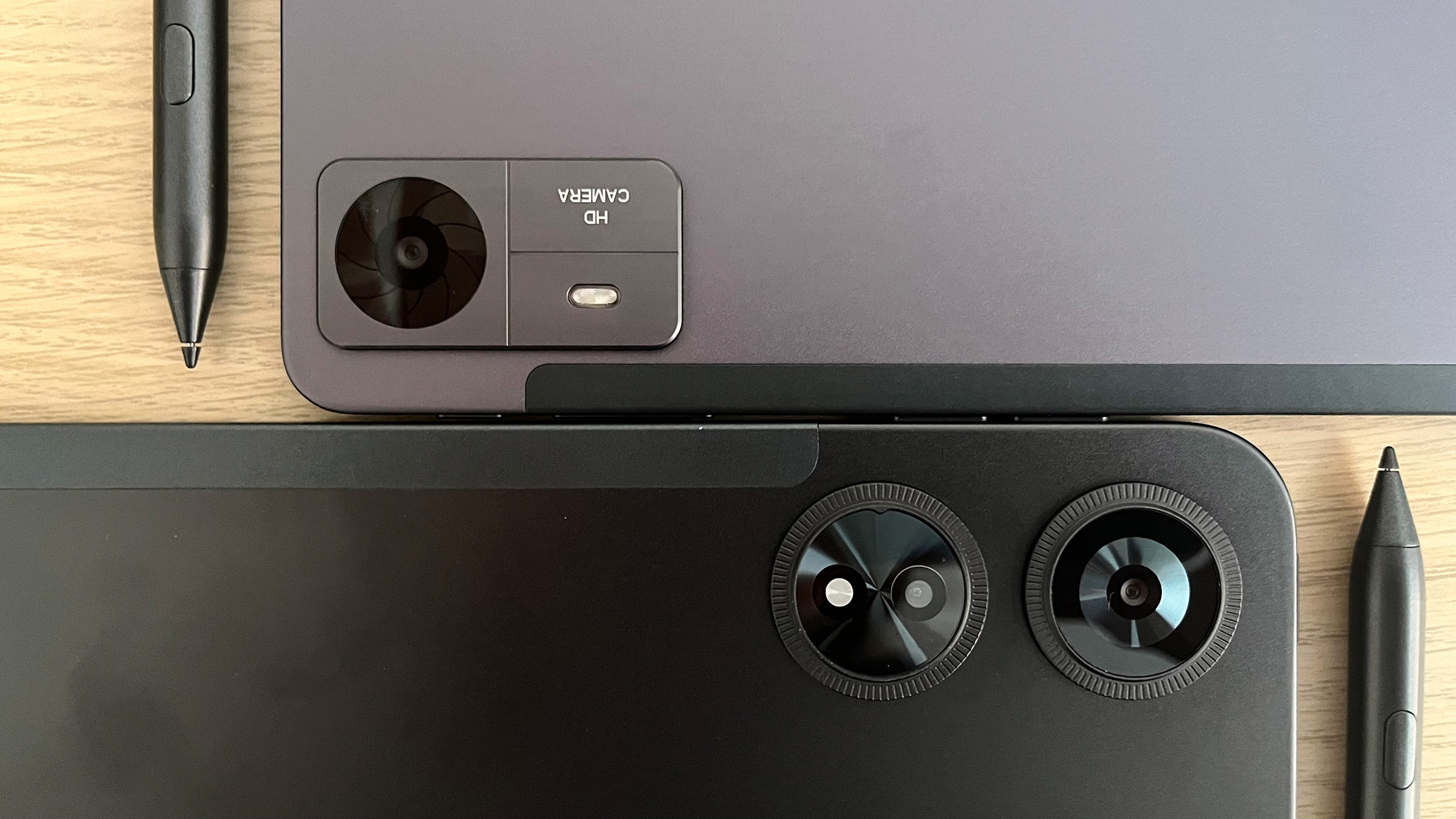
Huion’s H-Pencil feels very robust. I expected it to be light and plasticky, but on the contrary, it has a nice weight and doesn’t feel cheap. Huion says it has a metal finish, and while I believe this refers to the aesthetic and that it’s made of plastic, it’s a good-quality plastic. Don’t expect the premium feel of an Apple Pencil, but given the price point and the comparatively plasticky offering that comes with the XP-Pen Magic Drawing Pad, I’m impressed. Unfortunately, I can’t say the same about the Kamvas Slate’s screen.
Upon turning on the 13, I bumped up the brightness to 100% and couldn’t help but notice that it still looked a little muted. I then fired up Instagram on both the Kanvas Slate and my iPad Pro M1 to compare the difference, and it was stark. Whereas the iPad’s colors were vibrant and punchy, the Kamvas Slate’s were drab and muddy. Granted, the Slate’s 350-nit display pales in comparison to many consumer tablets, but the XP-Pen Magic Drawing Pad’s brightness is almost the same, and the colors look noticeably more vibrant and accurate. And indeed, the Kamvas Slate 11 doesn’t better the XP-Pen, but to my eye, its colors do look better than its larger sibling's (visible in the image below).
Part of what might be affecting this is the Kamvas Slate’s sensitivity to the angle at which it is viewed. It has an IPS (in-plane switching) screen, which provides more consistency at different viewing angles (square-on being optimal). Some drop-off as the viewing angle changes is to be expected, but the Kamvas Slates appear to be particularly affected. The result is a kind of vignette that I noticed almost immediately when firing the tablet up for the first time, and it’s more pronounced on the larger Kamvas Slate 13. As such, I cannot recommend these tablets for serious image editing because the displays simply do not deliver consistent enough results.

However, the Kamvas Slate isn’t designed specifically for photo-editing, and while color is still extremely important for digital artists, the screen won’t stop you from doodling on the go. After all, plenty of tablet users employ a hybrid approach, whereby they work between tablet and computer. I could see a creative using the Kamvas Slate to sketch while sitting on the sofa or on their lunch break, only to transfer their work for coloring at their desktop. Still, this isn't ideal.
It’s worth noting that while we’ve become accustomed to razor-sharp displays, each Slate's matte, paper-like screen does mean that the perceived resolution takes a bit of a hit, but that’s to be expected. Other pen displays fare similarly. That said, if you’re going to spend 10% of your time using the stylus and 90% of your time on Netflix, this probably isn’t the tablet for you. And yet, I do have to wonder if the Kamvas Slate’s paper-like display and anti-glare tech are contributing to the display's overall poor performance, but this is purely conjecture.

Huion Kamvas Slate 11 & 13: Performance
The MTK Helio G99 isn’t a powerhouse, but it runs smoothly for casual appointments. I worked on a multi-layer doodle in ibisPaint X and experienced little to no slowdown. I also edited imagery in Luminar: Photo Editor and Adobe Photoshop Express. Editing JPEG images in Luminar, with standard adjustments, felt very smooth and snappy. The clone tool took a couple of seconds to work its magic, and the first sky replacement took a few more, but once the sky had been masked, any replacements thereafter were quickly swapped in/out.
Adobe Photoshop Express was more taxing with a bit of lag, but still proved entirely serviceable. High-resolution RAWs challenged the tablet further, taking longer to load and causing significant slowdown when attempting more power-hungry adjustments, but basic adjustments were possible without too much hassle. However, this really isn’t the tablet for RAW and video editing. Sketching and quick JPEG edits are what fit its resume best.
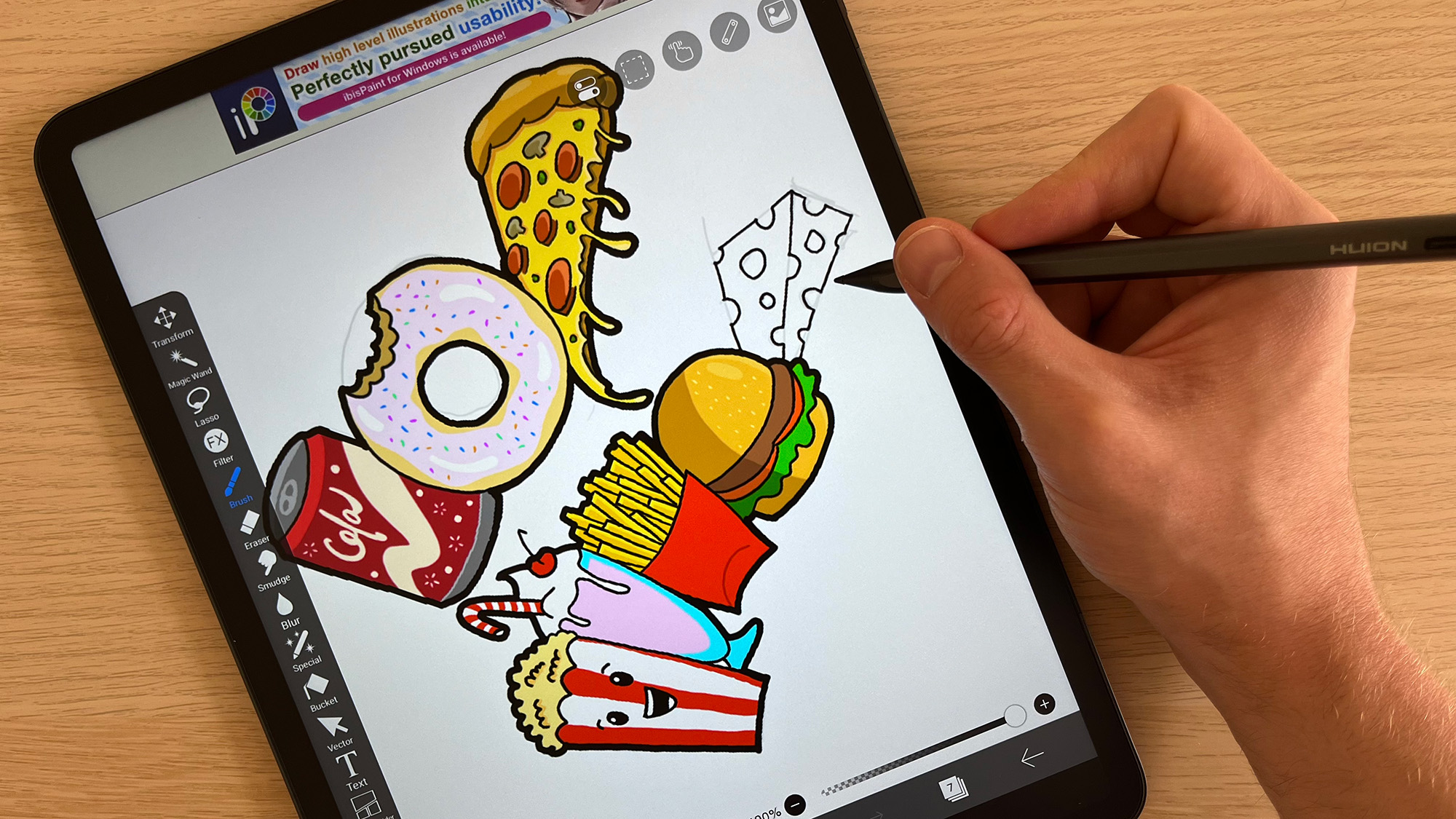
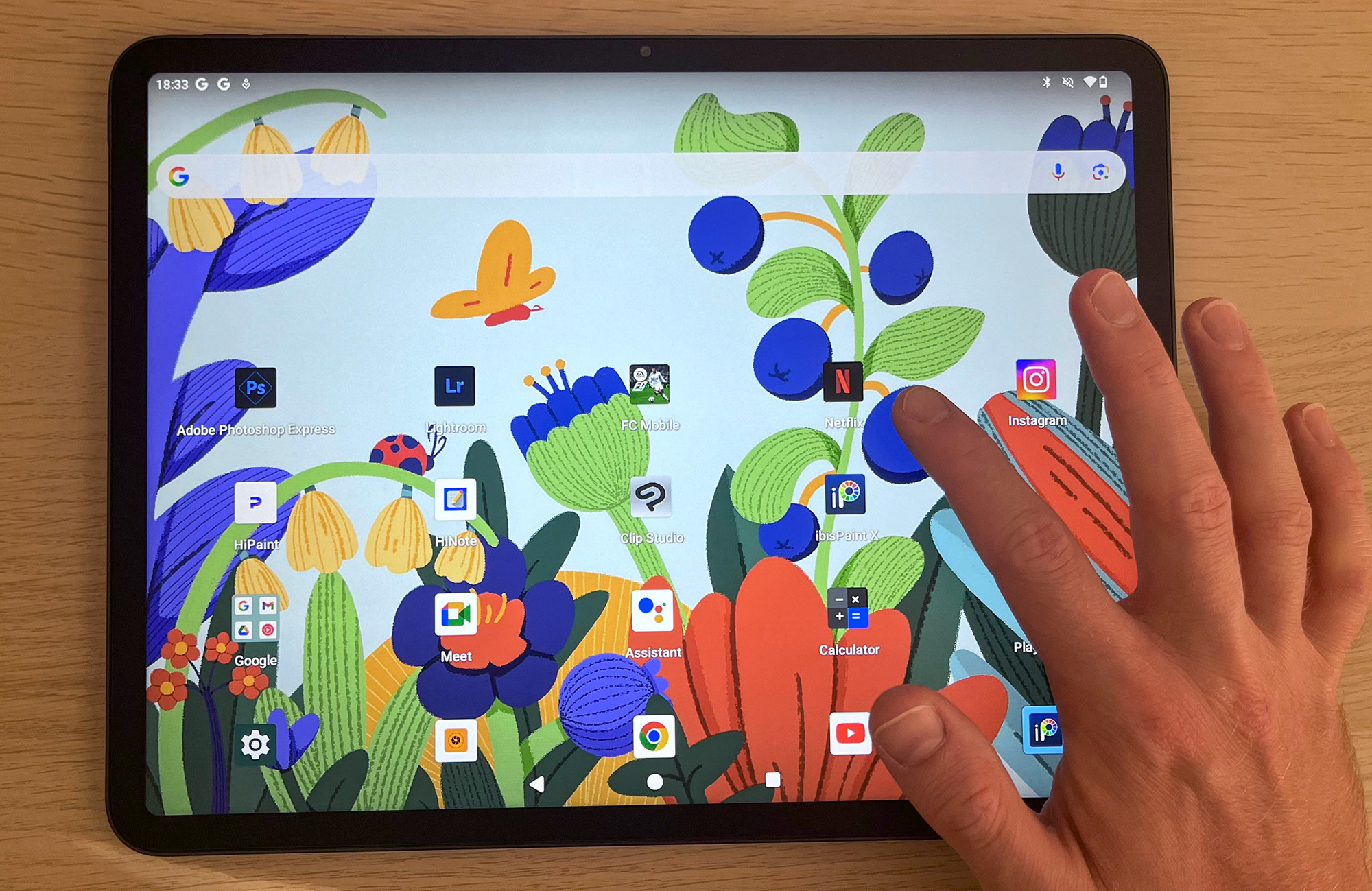
Part of the charm of a standalone pen display is that you can make use of it as an entertainment device when you’ve got a little downtime. As such, I fired up FIFA Mobile, and although the menus were a little choppy, the game itself ran just fine. Unsurprisingly, the camera isn’t anything to write home about, but a standalone pen display’s camera is hardly going to be used for anything other than photographing sketches for tracing or snapping the odd image for copying/inspiration. And for that, the Kamvas Slate’s camera suffices.
The tablet is a bit of a mixed bag when it comes to the digital drawing experience. I compared it directly to its biggest rival, the XP-Pen Magic Drawing Pad, and found that the Kamvas Slate displayed more jitter when drawing lines. That is to say, sweeping lines looked slightly less smooth and displayed more micro-wobbles. This wasn’t hugely pronounced, but digital drawing is a game of fine margins, and this did hamper the drawing experience by comparison.
Another area where the Kamvas Slate didn’t perform as well as the XP-Pen was pressure sensitivity. Elevating pressure on the screen, Huion’s H-Pencil stopped registering before the XP-Pen X3 Pencil Pro. When lightly shading, the H-Pencil would reach a point where it would leave a series of dots as it stuttered between registering and not registering, while I could continue shading at the same pressure with the X3 Pencil Pro.
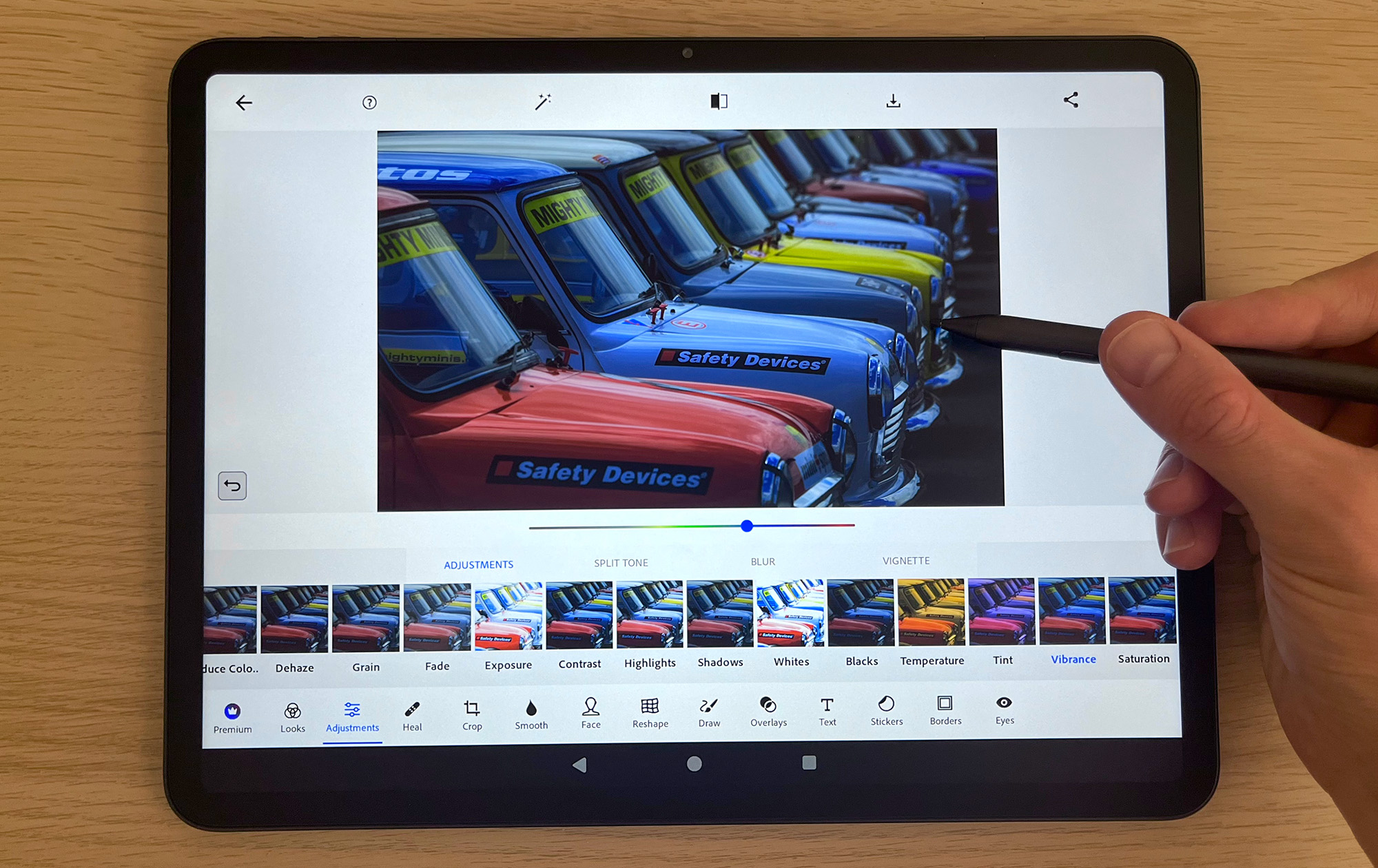
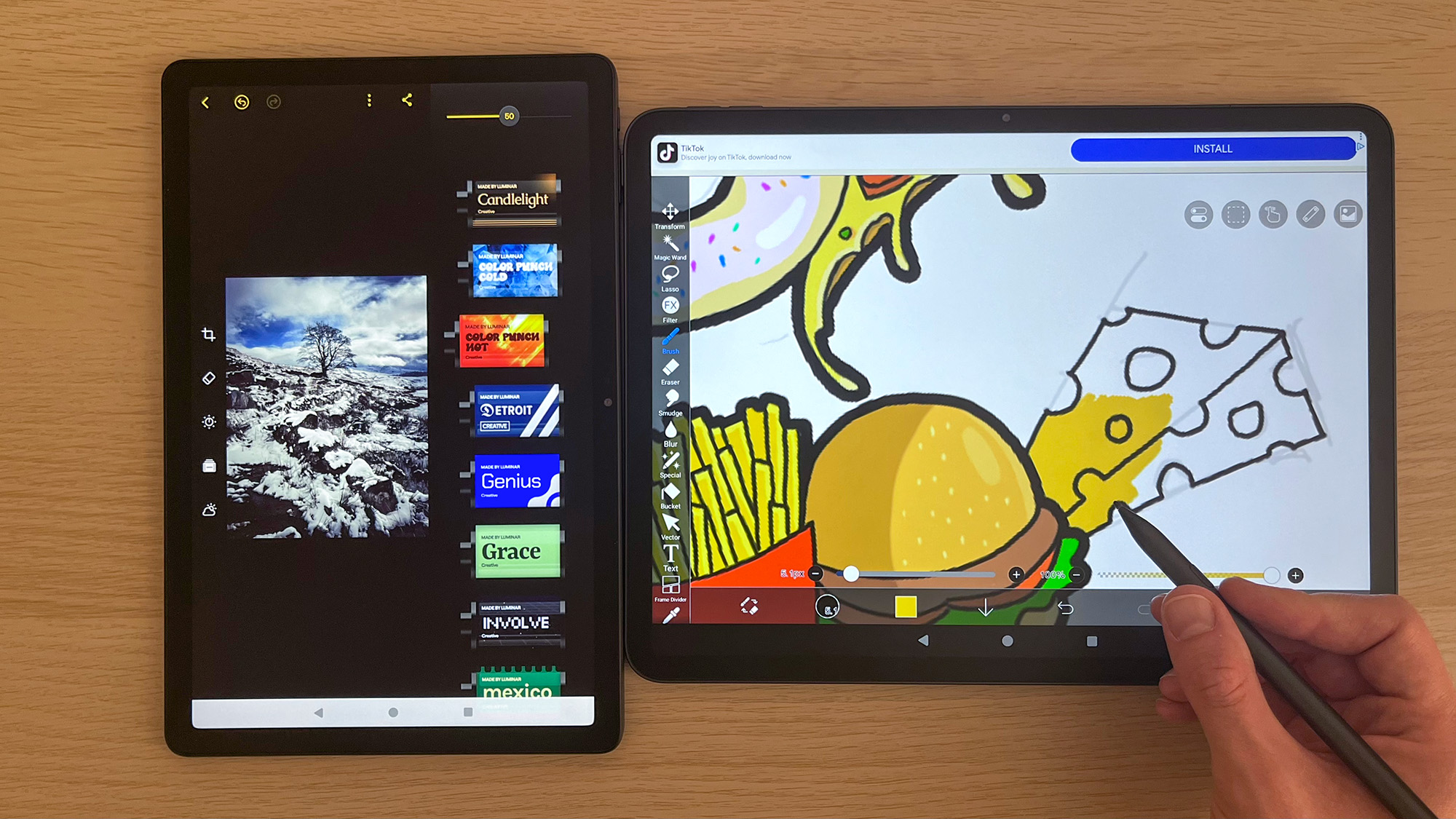
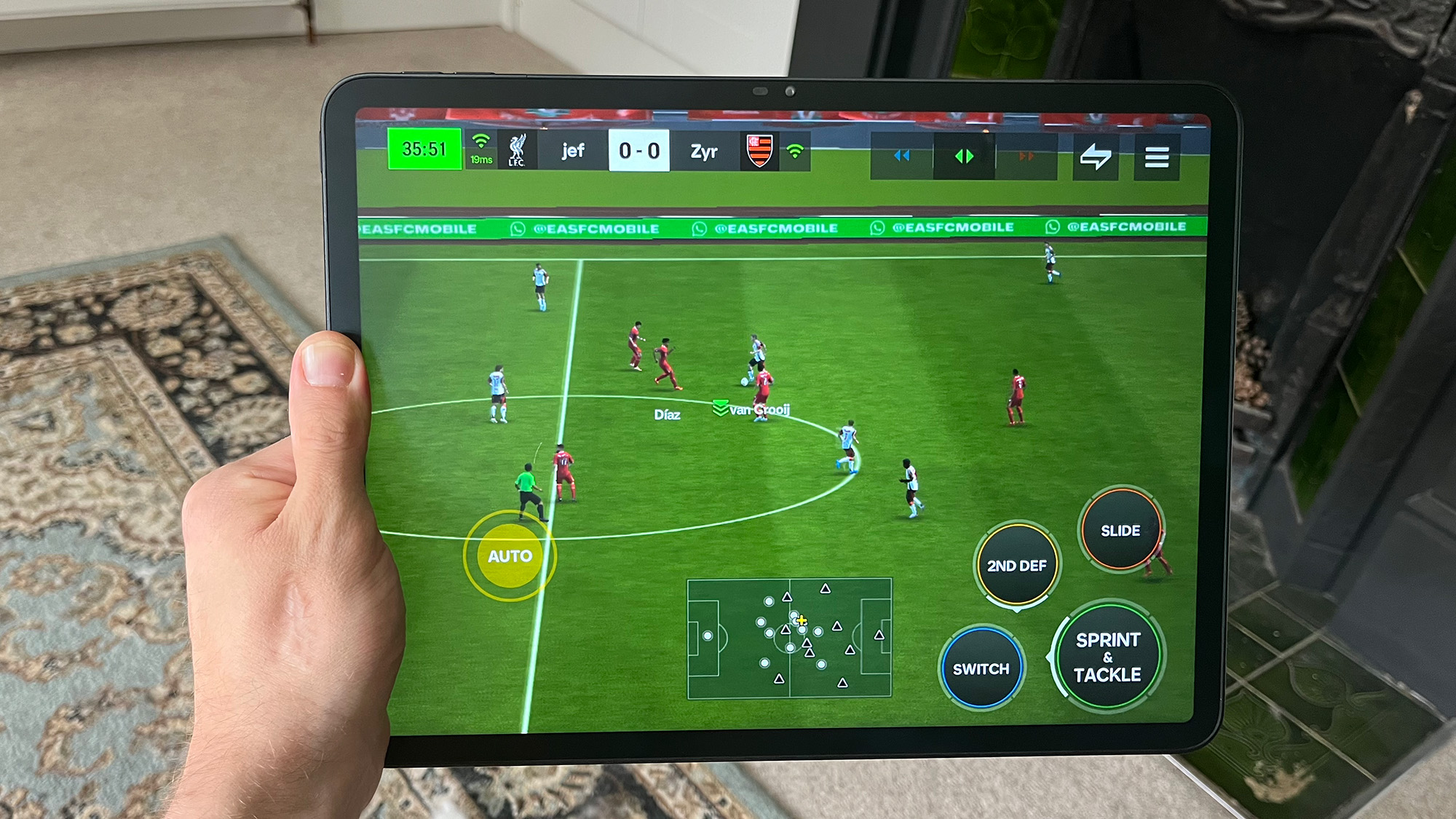
However, the Kamvas Slate did better the XP-Pen in the following two areas. Firstly, I experienced less parallax out of the box, and you can tilt the H-Pencil much farther than the X3 Pencil Pro before it stops registering, a boon when coloring or shading. Both tablets exhibit almost identical levels of lag when drawing sweeping lines, and while less lag is always better, this is something you get used to relatively quickly.
Ultimately, the H-Pencil feels better in the hand, thanks to its superior build quality and less parallax, but the X3 Pen Pro performs better where it counts most. Still, the drawing experience is serviceable for casual artists, students, or those on a budget, and the Kamvas Slate 13’s 4:3 aspect ratio does provide slightly more screen real estate than the XP-Pen’s 3:2 display.
As you’d expect, the 16:10 screen on the Kamvas Slate 11 isn’t as enjoyable to draw on as its bigger sibling. But if you’re looking for a highly compact standalone pen display, it provides something the XP-Pen doesn’t. I also enjoyed working on the Kamvas Slate’s matte screen. It’s got slightly less bite than many other pen displays on the market, but I enjoyed the feel when putting pen to screen nonetheless.
Huion Kamvas Slate 11 & 13: Verdict
Huion knows how to make a good pen display, which makes the Kamvas Slate 11 and 13’s shortcomings all the more frustrating. The display’s inconsistencies mean I cannot recommend this tablet to photographers or professional creatives, but for the casual artist or budget-conscious student who requires a portable pen display to sketch out ideas, take notes, or work in tandem with their desktop, these tablets still provide a service. The XP-Pen Magic Drawing Pad delivers a better display and drawing experience, but the Kamvas Slate’s alternative screen sizes and the 11's cheap price point could prove the difference.
|
Features ★★★★★ |
This standalone tablet is feature rich, can operate as a pen display and consumer tablet, and come with all the accessories needed to get started. |
|
Design ★★☆☆☆ |
The dull display just isn’t good enough for a tablet that is designed for creatives and the digital drawing experience leaves room for improvement. |
|
Performance ★★★☆☆ |
This tablet can handle casual tasks well enough, but it needs more grunt for power-hungry creative appointments such as AI-powered software, layers, and high-res imagery and video. |
|
Value ★★★★☆ |
When you consider the features, accessories, and the expensive price of standard pen displays, you’re getting a lot of perceived value with your purchase. |

✅ Buy this if...
- You want a cheap 13-inch, 4:3 or 11-inch, 16:10 standalone pen display.
- You want a pen display that also doubles as a consumer Android tablet.
🚫 Don't buy this if...
- You want to predominantly edit photographs or videos.
- You want a bright, crisp, color-accurate display.







